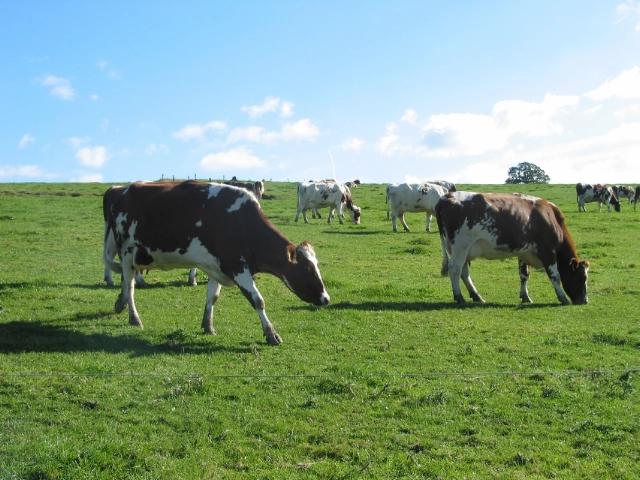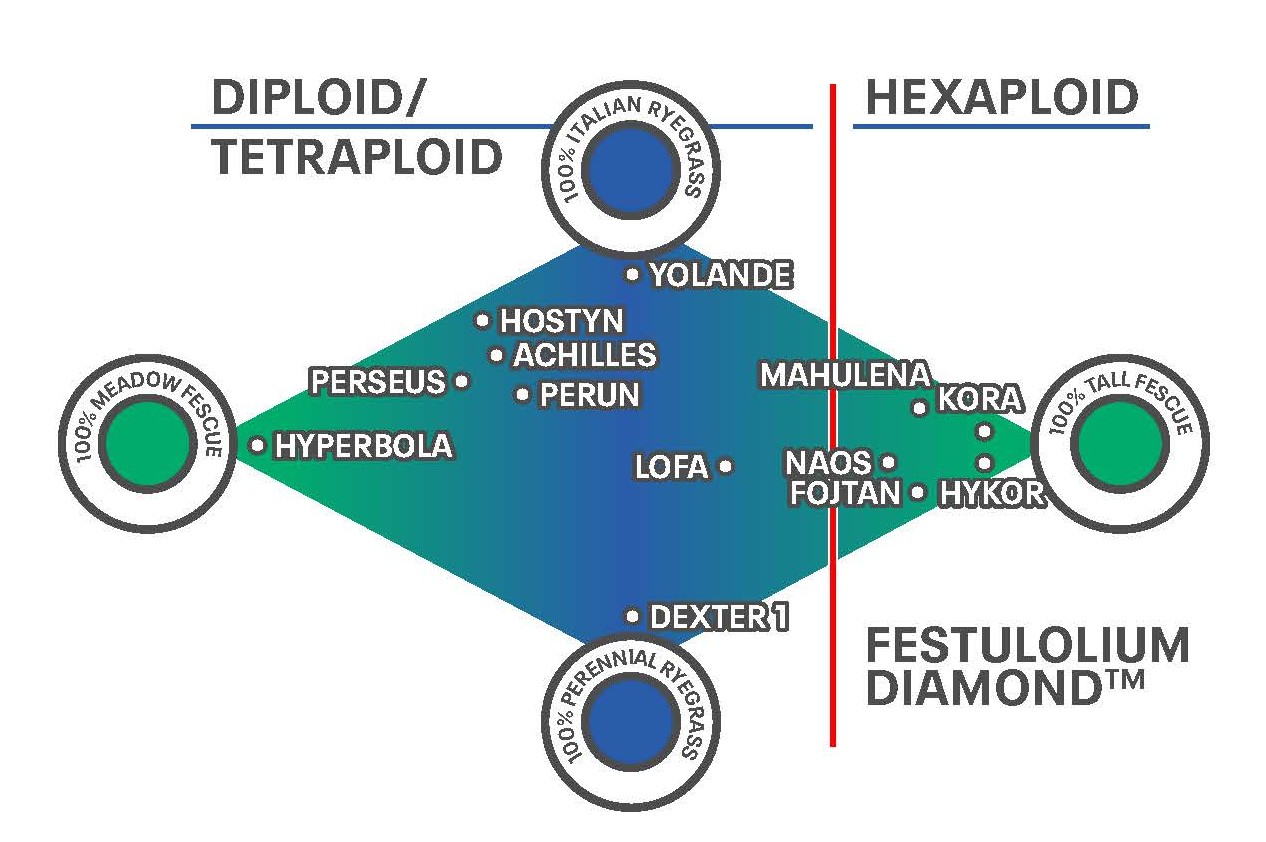FESTULOLIUMS
DLF is the global leader in Festulolium research and product development. No other seed company can match the broad portfolio that DLF has to offer.
The name Festulolium reflects the two parent species, fescue (festu) and ryegrass (lolium). Fescue and ryegrass species are closely related and share the same genus, which allows plant breeders to cross them and access a broader genetic pool for scientific advancements.
DLF research and product development teams focus on two festulolium species in particular, Festulolium braunii and Festulolium pabulare. Festulolium braunii represents a cross between Meadow Fescue and Italian Ryegrass and is categorized as a tetraploid or “4N” type of festulolium. Festulolium pabulare, on the other hand, is a cross between a Tall Fescue and Italian Ryegrass. This group includes multiple 6N types with strong tall fescue genetics and a unique 4N type called Lofa. This variety looks and performs like a ryegrass, but offers a longer stand life due to its tall fescue genetics.

BENEFITS
All DLF Festuloliums are genetically stable and developed as endophyte-free.
4N festuloliums are characterized by:
- Very early spring growth, with seedling vigor comparable to annual ryegrass
- Persistence like a perennial ryegrass, but with increased yield
- Better forage quality under summer stress than Italian ryegrass
- Upright growth with a tendency for heading during regrowth
- Slightly lower energy concentration and sugar content than perennial ryegrass
- Comparable resistance to rust, spots and blights as ryegrass
- Suitable for both cutting and grazing
- Higher carbon sequestering than ryegrass
6N festuloliums are characterized by:
- Higher seedling vigor and earlier spring growth compared to tall fescue
- Very persistent, similar to endophyte-free tall fescue
- High yield, similar to tall fescue
- High feed quality and palatability, like a ryegrass
- Upright growth with a tendency for heading only in first cut
- Tolerates heat, drought and periodic flooding
- Good winter hardiness
- Used for both grazing and harvested forage, including dry hay production
FESTULOLIUM DIAMOND
The Festulolium Diamond® shows the relationship between the genetic makeup and the morphological expression of DLF’s festulolium varieties.

| More blue means more ryegrass genetics, thus more ryegrass characteristics. Also, the closer a variety is to the top of the diamond, the more it will resemble Italian ryegrass (Lolium multiflorum) than perennial ryegrass (Lolium perenne). | Less blue means more genetic background and morphological expression from tall fescue (Festuca arundinacea) or meadow fescue (Festuca pratense). The red line shows the distinct transition point for when a festulolium will be 4N or 6N. |
FESTULOLIUM USES
NEW PASTURE SEEDINGS
4N festuloliums can be used as a component in a mixture that establishes quickly, provides high forage quality, and persists for multiple years. On the other end of the spectrum, 6N festuloliums can be a long-lived component that provides high forage yield like tall fescue, but with a higher forage quality and improved summer performance.

OVERSEEDING / GRASSHANCING®
Because of their establishment vigor, 4N festuloliums can be used to quickly strengthen thin pastures and hay fields. They are often used to reinvigorate winter damaged alfalfa and improve both dry-matter yield and fiber digestibility. Their later maturity also matches alfalfa cutting management.
COMPANION PLANTING WITH ALFALFA
DLF trials show the alfalfa-festulolium combination can produce 10% more dry matter yield than alfalfa-timothy or alfalfa-meadow fescue combinations. 4N festuloliums can be planted with alfalfa as a high-quality nurse crop, and later maturing 6N festuloliums can be planted with alfalfa to provide higher forage yields, increase total fiber digestibility, or improve the persistence of the hay stand.


EMERGENCY FEED
Festuloliums can match the short-term yield of annual grasses and provide longer growth into the summer, as well as persist into the following crop years. They can also be partnered effectively with many forage species, including alfalfa, clovers, annual ryegrass, perennial ryegrass, orchardgrass, tall fescue, timothy, brome and others.